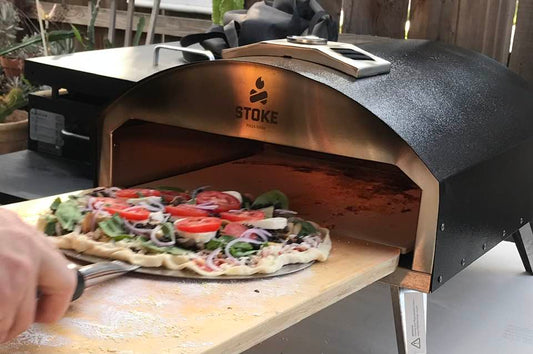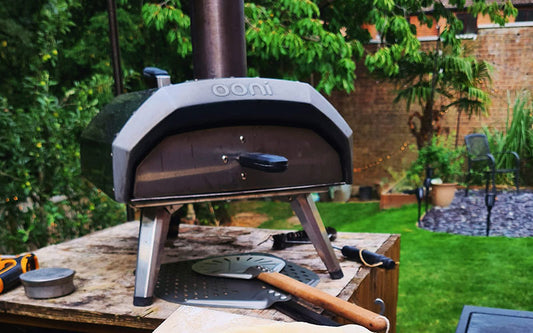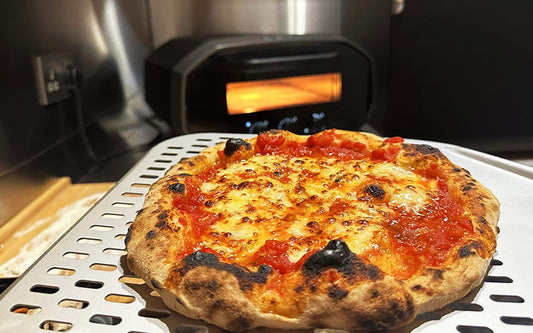Are you one of those people who refuse to eat the crust after all the good bits (aka, the toppings) are gone? If you do this, there’s nothing wrong with you. It’s most probably the crust that sucks. Not a lot of people like chewing on dry, dense bread, after all.
Pan crust, stuffed crust, and deep dish crust are modern culinary inventions that aim to make the crust stand out on its own. Each type has its unique characteristics and merits.
The thick and tender crust of the deep dish crust is a perfect companion to the hearty toppings. Pan crust is softer and more buttery than regular hand-tossed pizza, and a stuffed pizza crust is a snack in itself. Polish it off with some cheese sauce, and that’s it! You’re in food heaven now.
In this article, I will compare and contrast Deep Dish vs. Pan vs. Stuffed Pizza crusts side by side. I’m on a quest to settle the debate: which type of pizza crust is best? Lesss go!
Deep Dish vs. Pan vs. Stuffed Pizza – Comparison Chart?
Sitting at a pizzeria or cafe and need to quickly figure out the key differences between these three pizza styles? I’ve got you. Take a look at the comparison table below:
| Crust Type | Thickness | Texture | Baking Needs | Common Toppings |
| Deep Dish |
Very thick, usually 1.5-2 inches |
Soft, bread-like interior with crispy exterior |
Low temp (400°F) for 25-30 mins |
Hearty meats like sausage, pepperoni |
| Stuffed Crust |
Medium thick |
Soft and chewy with crispy outer edge |
400°F for 10-12 mins |
Cheese, pepperoni |
|
Pan Pizza |
Thicker than regular pizza, about 1 inch | Crispy exterior, soft and airy interior |
High temp (475°F+) for 12-15 mins |
Versatile – goes well with both veggie and meat toppings. |
History of Deep-Dish Pizza, Stuffed Pizza, and Pan Pizza
Lou Malnati, chef-owner of the iconic Lou Malnati’s Pizzeria in Chicago, Illinois says “Chicago deep-dish pizza is a monster. It is the ultimate indulgence”. And I agree with each word.
But how did this richer, heartier, meatier variant of traditional pizza come to being?
Let’s start off by tracing the history of deep-dish pizza.
- According to the majority of the sources, deep-dish pizza originated in Pizzeria Uno, Chicago, in 1943. It was the brainchild of Uno’s founder Ike Sewell. The pizza looked like an upside-down bowl with a thick crust. It was created as a way to use up the extra dough left over from making regular pizzas in restaurants.
The recipe for deep-dish pizza soon became more popular than traditional Italian pizzas.
- Coming to stuffed pizza, the origin of this revolutionary culinary invention is debatable. The common consensus is that Pizza Hut’s food scientist, Patty Scheibmeir, came up with the idea in the early 1990s. Pizza Hut officially launched its iconic stuffed crust pizza in 1995.
However, in 2013, a Brooklyn native named Anthony Mongiello claimed that he invented the stuffed crust pizza. He even patented it in 1987.
He sued Pizza Hut for $1 billion over this claim but lost in 1999. Well, there’s no way to tell for sure who invented the stuffed crust pizza. But I can tell you this—it’s delicious!
- According to Pizza Hut, the idea of pan crust also originated in their kitchen. Other sources claim that the crust was inspired by Mama Giordano’s Italian Easter Pie.
Her sons Efren and Joseph Giordano immigrated to Chicago in the 1970s and brought her recipe with them. The recipe is said to have been adopted by Pizza Hut later on.
Difference Between Deep Dish Pizza, Pan Pizza, And Stuffed Pizza
While all three crusts are thick-crust pizza, there are some stark differences. Let’s dive deep into the key differences between deep dish vs. pan vs. stuffed pizza.
Crust Texture and Taste
The first and most obvious difference between deep-dish pizza is the crust. Deep dish pizzas have a thicker, breadier crust that is more substantial than the flakier crusts of the pan and stuffed pizzas.

This is because deep-dish pizzas are made with a combination of yeast and baking powder. Baking powder is primarily added to minimize the formation of large air pockets and soften the dough.
Popular Chicago restaurateur and chef Rick Bayless called stuffed crust “a pure indulgence” in an interview with Chicago Magazine.
The stuffed crust pizza is indeed an indulgent variation of the classic pizza. There are many versions of stuffed pizza. Some are stuffed with cheese alone. Other variations amp up the decadence quotient with meat and cheese filling.
The crust is soft and chewy, with a slightly crispy exterior from being baked in the oven. The filling in the crust adds an additional layer of flavor and texture to the pizza.
About a week ago, I was reading The Mozza Cookbook by Chef and author Nancy Silverton, where she declared her love and admiration for pan-crust pizzas by calling it “a textural wonderland in every bite.”
I reckon pan pizza is closely tied to both Detroit-style and Chicago-style deep-dish pizza.
All three variations are characterized by their thick, chewy crust and pan-baked format. The pan crust we get at most pizzerias is baked in a deep, round pan with sloping sides, similar to a cake pan.
The dough is pressed onto the pan and baked until it’s golden and crispy. The crust is light on its own and yet acts as an ideal pairing with heavy toppings.
Baking Temperature
Chicago deep-dish pizza is usually baked low and slow at 400-425 degrees for 28-30 minutes. This results in a soft on the inside, crispy on the outside crust that’s perfect for holding up to all the toppings.
Stuffed crust pizzas are also baked at a similar temperature range. The baking time is shorter, though, say 10-12 minutes.
Pan-crust pizzas are baked at a higher temperature of 475-500 degrees for 12-15 minutes. Pan crust is much lighter than the other two crust variants. Therefore, you need a really hot oven to get the desired results.
Toppings
See, there are two types of people in the world. For one who orders pizza for the toppings alone, the crust is just a side character for them. The other wants the best of both worlds.
In my humble opinion, you should try deep-dish if you are here for the toppings alone. Deep-dish pizzas are loaded with sauce, cheese, and various meat toppings like Italian sausage, beef, pepperoni, and ham. The flavors explode in your mouth as soon as you take the first bite. I’m drooling while typing all this.
Stuffed crust is typically stuffed with cheese and pepperoni. During my visit to India, I tried Pizza Hut India’s kebab-stuffed crust, which was a total knockout for me. If you are making pizza for someone who always throws out the crust, make them try stuffed crust and watch them gobble up every last crumb of the pie.
Pan pizza is just as versatile as a classic hand-tossed crust, only lighter and less chewy. You can pair it with any amount and type of topping you like. I personally prefer going easy on the toppings when ordering a pan crust because I don’t want the toppings to drown out the taste of the crust.
Similarities Among Deep Dish Pizza, Stuffed Pizza, and Pan Pizza
While each type of pizza has its own distinctive characteristics, all of them are variations of thick-crust pizza. The deep dish is the thickest and fluffiest, the pan crust is the lightest, and the stuffed crust is somewhere in the middle.
They also use similar types of sauces, cheeses, and toppings. The difference is in the number of toppings – deep dish pizzas contain the highest amounts of toppings compared to the other two.
In Conclusion – Pan Vs. Deep Dish Vs. Stuffed Pizza: Which Pizza Is Best?
It’s a difficult question, but I’ll try anyway.
If I have to pick between pan vs. stuffed pizza, I’ll go with stuffed crust because the latter is an amazing side dish. But if the choice is between deep dish vs. stuffed, I’ll go with the deep dish because of the sheer richness and exquisite melange of toppings you get with it.
You should try all three crusts at least once in your life to make an informed decision. They are all delicious in their own way.




